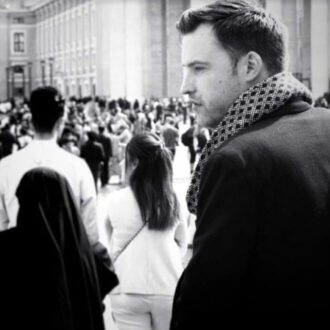Thesis: Unum Corpus: A Study of the Olivetan Network and their Artistic Patronage (1450 – 1550)
Supervisor: Dr. Scott Nethersole
My research focuses on works of art that were owned and commissioned by the Olivetans, a monastic branch of the Benedictine Order founded near Siena in 1313, during a period of intense growth and expansion (1450 – 1550). The research uses their distinctive character, devotional practice and administrative structure as a lens through which to interpret their activities.
By the end of the sixteenth century, the Olivetans were prominent and widespread; they maintained a substantial congregation of 100 monasteries and 1190 monks across Italy, their influence stretching from Milan to Palermo. Supported by an array of eminent and dedicated patrons (e.g. the Marsuppini in Arezzo, the Malatesta in Rimini, Alfonso II in Naples etc.), they housed works from some of the most remarkable artists of the Renaissance, including Leonardo, Raphael, Mantegna, Andrea del Castagno, Paolo Uccello, Filippo Lippi and Pinturicchio.
In spite of their rich history of patronage, the Olivetan Order has been relatively understudied as a distinct network. Most investigation has been into the establishment of their territorial abbey, Monte Oliveto Maggiore, with particular attention paid to Luca Signorelli and il Sodoma’s decoration of the monastery’s cloister. Following this, studies have commonly interpreted individual works or sites in isolation, often marginalising the role and spiritual profile of the Order. This comparative neglect of the Olivetans as a patronage network is surprising, because, as this thesis explores, it was the Order’s emphasis on communality in structure and practice that often informed how their artworks were commissioned and determined these given works’ content and function.
The thesis focuses on this unique structure and character of the Olivetans, and is driven by four interrelated research questions:
- How does the distinct character and spiritual practice of the Olivetans enhance our understanding of the works of art in their monasteries and churches?
- How is the Olivetans’ emphasis on coenobitic monastic practice and communal prayer transcribed into the artworks they commissioned?
- How did the Olivetan network facilitate the dissemination of works of art and their associated styles?
- What implications does such a network have for the tradition of thinking regionally within Renaissance Art studies?
Through these questions, the research aims to establish an alternative understanding of the Olivetans as patrons of art: how they saw themselves and how they experienced the pictures, sculptures, and objects they commissioned or for which they provided a home.
Education
- PhD Candidate, The Courtauld Institute of Art (2019 – present)
- MA History of Art, The Courtauld Institute of Art (2017 – 2018)
Subject: ‘Continuity and Innovation: Re-framing Italian Renaissance Art from Masaccio to Michelangelo’
Thesis: ‘Competing virtues: Experiment, Illusion, and the Paragone in the Chapel of the Cardinal of Portugal in San Miniato al Monte.’
Supervisor: Dr. Paula Nuttall - MA English Literature, The University of Reading (2009 – 2010)
- BA English Literature, The University of Sussex (2002 – 2005)
Teaching
- Associate Lecturer, The Courtauld Institute of Art, (2019 – 2020)
Research Interests
- the artistic patronage of the Benedictine Orders in the Quattrocento and Cinquecento
- the transmission of art within monastic networks in fifteenth and sixteenth century Italy
- Italian Benedictine devotional practice (esp. in relation to the monastic choir and the novitiate)
- the replication of art and artworks in the fifteenth and sixteenth century
- Renaissance intarsia
- Framing and re-framing
- Renaissance materiality
- monastic cartographers in the sixteenth and seventeenth centuries
- Italian artists in Britain 1500 – 1650






